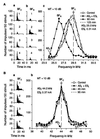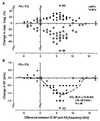Experience-dependent corticofugal adjustment of midbrain frequency map in bat auditory system
- PMID: 9770543
- PMCID: PMC22888
- DOI: 10.1073/pnas.95.21.12663
Experience-dependent corticofugal adjustment of midbrain frequency map in bat auditory system
Abstract
Recent studies of corticofugal modulation of auditory information processing indicate that cortical neurons mediate both a highly focused positive feedback to subcortical neurons "matched" in tuning to a particular acoustic parameter and a widespread lateral inhibition to "unmatched" subcortical neurons. This cortical function for the adjustment and improvement of subcortical information processing is called egocentric selection. Egocentric selection enhances the neural representation of frequently occurring signals in the central auditory system. For our present studies performed with the big brown bat (Eptesicus fuscus), we hypothesized that egocentric selection adjusts the frequency map of the inferior colliculus (IC) according to auditory experience based on associative learning. To test this hypothesis, we delivered acoustic stimuli paired with electric leg stimulation to the bat, because such paired stimuli allowed the animal to learn that the acoustic stimulus was behaviorally important and to make behavioral and neural adjustments based on the acquired importance of the acoustic stimulus. We found that acoustic stimulation alone evokes a change in the frequency map of the IC; that this change in the IC becomes greater when the acoustic stimulation is made behaviorally relevant by pairing it with electrical stimulation; that the collicular change is mediated by the corticofugal system; and that the IC itself can sustain the change evoked by the corticofugal system for some time. Our data support the hypothesis.
Figures





References
Publication types
MeSH terms
Grants and funding
LinkOut - more resources
Full Text Sources

